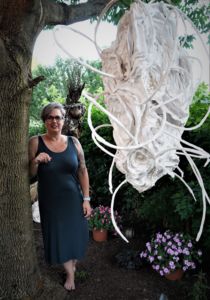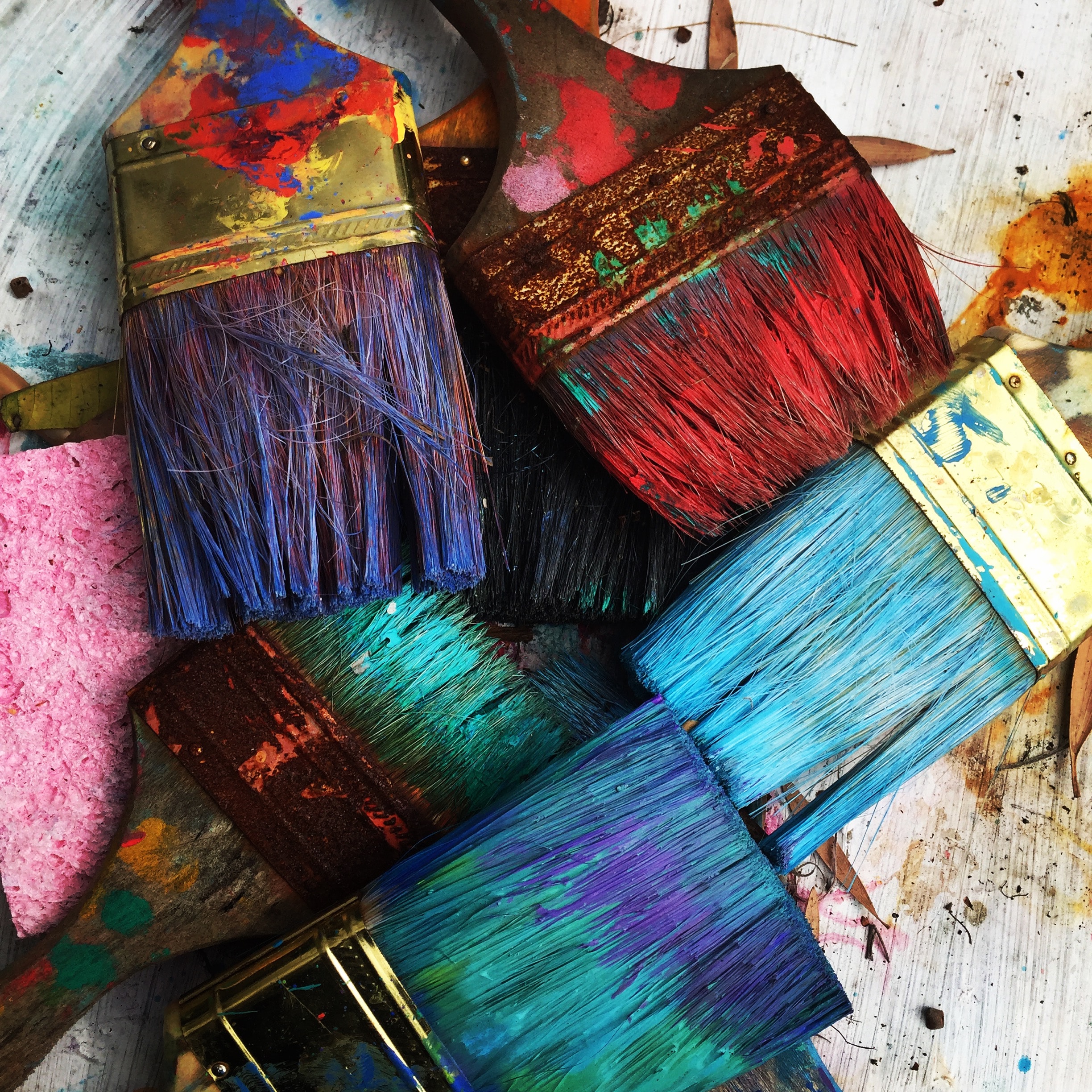Turn Your Brain Inside Out
Building Skills with the “Flow State”
 Satisfaction eluded Heather Miller as she pursued her art, until she was reminded of lessons that she taught her elementary-aged students about letting go during the creative process.
Satisfaction eluded Heather Miller as she pursued her art, until she was reminded of lessons that she taught her elementary-aged students about letting go during the creative process.
For years, Heather worked to improve her painting, trying to emulate successful artists.
“I was trying to recreate what was selling, trying to see how I fit into the market in the Midwest,” she said, “and I just wasn’t happy.”
Heather joined the MHANI staff in 2018 after working for more than 30 years as an elementary school teacher. She spent the last 17 years of her career teaching art at Oak Farm Montessori School in Avilla, IN. The primary goal in her classroom was to get kids completely engaged in the creative process. Eventually, they would become so enthralled with their work that time seems to stand still as they concentrate on the challenge at hand. In Montessori teaching, this is known as the Flow State.
Once in the Flow State, kids lose themselves in the moment. They start making their own decisions in order to reach their creative goals. These experiences allow kids to prove to themselves that they can accomplish things without an adult telling them step-by-step what to do. They have to navigate and find success on their own.
“They were taking risks in a safe environment and that also increased their self-esteem and their sense of self-empowerment,” she said. In finding their own way, her students were developing their problem-solving skills.
“That problem may be creating a piece of art,” she said, “but it might be engineering, something to fix something in their house when they get older.”
“The more you create, the more problems you solve, the more skills you acquire that allow you to better create what your mind pictures,” she said. “It’s a positive cycle that feeds the soul and builds skill sets.”
This lesson came back to Heather during a trip to New York City where she visited numerous art galleries exhibiting works in a very broad range of style, approach and, occasionally, taste.
“It gave me permission to do whatever I wanted to do,” she said. Not only were the artists’ accepted for their efforts, they were celebrated for taking risks with their work. It gave her the confidence to move ahead on her own terms.
Heather was fortunate to experience this breakthrough. It’s a hurdle that keeps many people from even attempting to create because they wonder if their effort will be acceptable to others. Its a very vulnerable situation. Many of us believe our art must have a certain quality or a certain aesthetic, in order to be considered successful.
Whether from us or from others, there can be a lot of pressure involved in taking that idea or emotion, processing it internally, and then letting it go in an external form. For Heather, making art is an exercise in being true to who you really are.
“If you have trauma in your history or violence or anything, it’s learning to accept it and not push it away and hide it, because it’s a part of you whether you like it or not,” she said, recalling her own experiences. “It’s a constant battle because it is a part of you, even though you don’t want it to be.”
“I used to tell students it’s like turning your brain inside out, so people can see what you’re thinking,” she said. “Here are my thoughts and feelings, with textures and colors and lines.”
Heather is sharing her thoughts and experiences with mental health as one of the 25 artists submitting their work to MHANI’s Art of Hope exhibit, opening in October.

